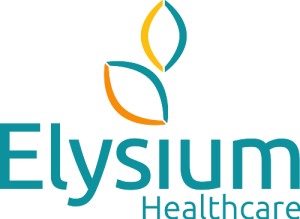Understanding Patient-Reported Experience Measures
Patient-Reported Experience Measures (PREMs) are tools we use to gather feedback from patients about their experiences while receiving care.
They give us insight into the quality of care from the patient's perspective, highlighting what went well and what could be improved.
As a collaborative we aim to create services where patient experiences are central to service development and improvement. One way of embedding this into practice was to develop a single patient experience feedback survey which would be administered across all wards.
Results from the surveys are held centrally and collated feedback will be shared anonymously with ward managers and within governance meetings.
Step 1: Scoping
In this initial phase, we gathered any questionnaires or patient experience feedback surveys currently in use on each ward. We also conduct a thorough review of existing literature, analysing the latest research, best practices, and tools available. Additionally, we identified any standards within the Care Quality Commission (CQC) and the Quality Standards for Adult Inpatient Eating Disorder Services (QED) that related to patient experience.
Step 2: Co-production
Next, in order to develop a survey which both met the needs of patients and the service and was accessible and relatable to all, a group of clinical staff, a data analyst and lived experience partners came together to form a co-production working group. Bringing together this diverse team ensured that every aspect of our project benefited from a wide range of perspectives and expertise.
Step 3: Data Review
Together, we reviewed all of the information collated during the scoping phase to identify common themes and patterns in the questions.
Step 4: Making it Meaningful and Relevant
In this final step, we focused on refining the questions. We worked through the key questions and common themes identified earlier, deciding which ones are most important to include. We also rephrased questions to ensure they are clear, relevant, and meaningful to everyone involved. This ensures that the information we gather truly reflects the experiences and needs of those we aim to serve.
- Enhance Understanding: Improve our understanding of patient experiences by gathering detailed feedback.
- Improve Quality of Care: Use the insights gained to identify areas of strength and opportunities for improvements.
- Monitor Performance: Assess and compare the quality of care provided.
- Empower Patients: Encourage patient participation by valuing their feedback and using it to guide improvements in care delivery.
By focusing on these aims, we aim to create services where patient experiences are central to service development and improvement.
“It was a pleasure and a privilege to be part of this project and work with such a lovely group of people. What stood out to me most was the positive, optimistic tone that underpinned all of our discussion and decision-making.
Despite the serious, complex nature of EDs and how difficult (and different!) they can be to treat, it felt like hope for change was always at the centre of what we were doing. Without minimising or avoiding the persistent challenges that impact service delivery and data collection, conversations were characterised by fresh thinking and forward-looking attitudes around a shared aim of improving patient experience and outcomes.
The process was highly inclusive and democratic; everyone had an equal opportunity to contribute, irrespective of their clinical/non-clinical background. I also appreciated how much consideration was given to accessibility and adaptability - not only for us as project participants, but also for prospective recipients of the finished form. A lot of thought went into the specific phrasing and presentation of questions to reflect the diverse needs of respondents.
Lastly, I'd like to say a special thank you to Emily who oversaw the project… her communication with the wider group has been excellent throughout, particularly ahead of meetings, when she sent timely emails containing the agenda and any relevant documents to look through in advance. Emily did a fantastic job of coordinating tasks, managing schedules and keeping everything on track. That included blocking out time in her diary for 1:1 support should people want it. She facilitated highly effectively collaboration, whilst ensuring that we completed what we set out to achieve within the expected time frame. Well done Emily and well done us!”




